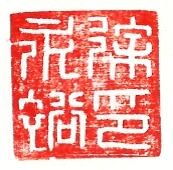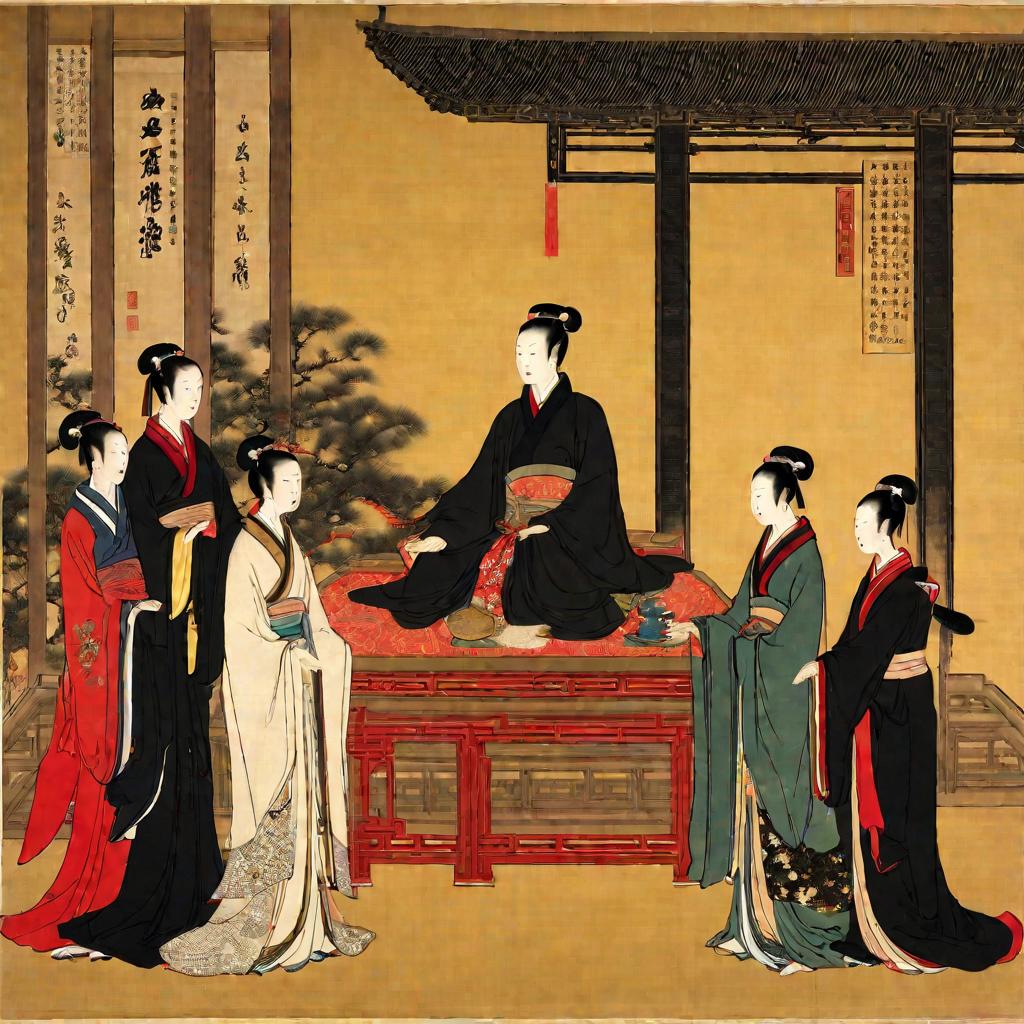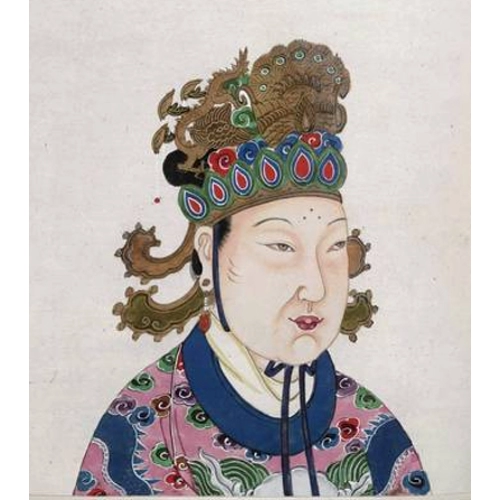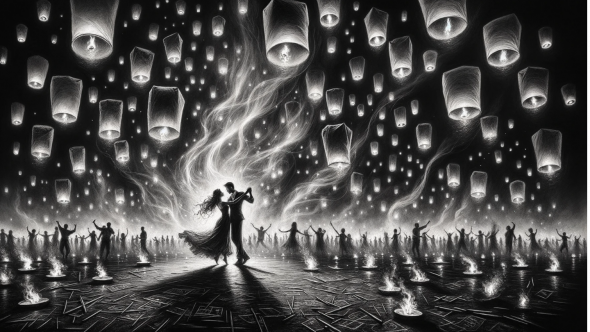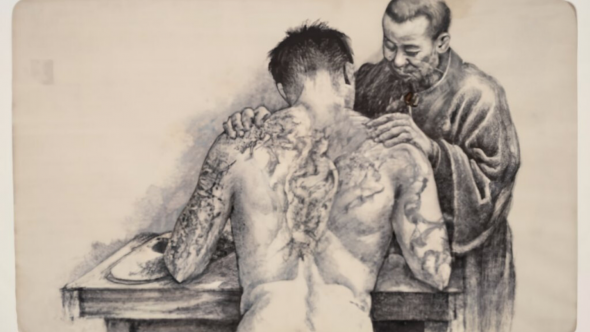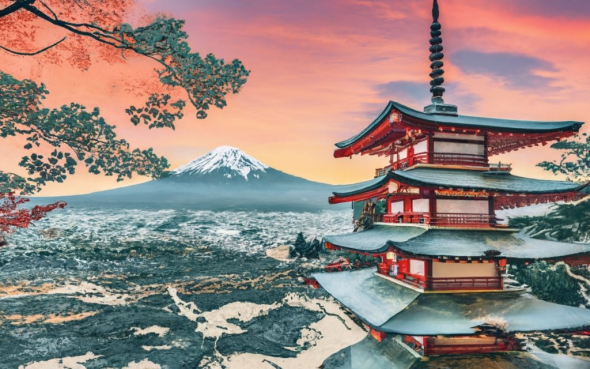The classics of Chinese folklore are have stood the test of time. They're meaningful cultural treasure troves masquerading as bedtime stories with multiple tattoo-worthy idioms.
Each tale is a cocktail of history, tradition, and a dash of cosmic wonder. Don't believe me, here's our TLDR version. Of course, we add a few tattoo ideas for our readers to ponder:
- The Butterfly Lovers (梁山伯與祝英台): More than just a tragic love story; it's a critique of archaic educational and marital systems that could turn life into a Shakespearean tragedy. It's like the Romeo and Juliet of the East, but with more societal commentary and fewer poison vials.
-
The Legend of the White Snake (白蛇傳): A smorgasbord of traditional beliefs, animism, and folklore, seasoned with themes of love, loyalty, and vengeance. It's as if someone took a cultural encyclopedia and turned it into an epic drama.
This tale somewhat aligns with "The Little Mermaid" as both stories feature a supernatural female being transforming into a human to be with the man she loves, facing severe trials as a result.
- Lady Meng Jiang (孟姜女哭長城): This is tour of the Great Wall and the tyrannical rulers who made it infamous. Let's compare it with Penelope from "The Odyssey" by Homer. Both women exemplify enduring loyalty to their absent husbands despite extreme adversity.
-
The Cowherd and the Weaver Girl (牛郎織女): An ancient stargazing guide, explaining celestial phenomena like the Milky Way through the lens of romance and mythology. Aligns with the story of "Orpheus and Eurydice" from the book "Metamorphoses" by Ovid.
Both stories involve lovers separated by otherworldly boundaries but united occasionally through extraordinary means.
Now, for our intrepid readers, more detail and the tattoo ideas.
The Butterfly Lovers (梁山伯與祝英台)
An Undying Emblem of Love's Resilience
情深意長 (qíng shēn yì cháng) is brought to life in the renowned Chinese folk tale known as The Butterfly Lovers.
Within this tale, two protagonists, Zhu Yingtai and Liang Shanbo, come to know each other under most unconventional circumstances. Zhu Yingtai is a woman who defies societal expectations of her time. She adopts a male identity to gain access to an education, an opportunity typically denied to women.
During her academic pursuits, she meets Liang Shanbo, forming a friendship that soon evolves into a love that challenges the societal norms they both live under.
This is not your typical love story that focuses solely on physical attraction or dramatic plot twists. Instead, The Butterfly Lovers emphasizes an emotionally rich and intellectually fulfilling relationship, deeply rooted in shared values and mutual respect. This tale shares a thematic kinship with the Western story of Romeo and Juliet. Both tales feature young lovers who defy societal constraints to find a deep, meaningful connection with each other. However, while Romeo and Juliet find tragedy in their defiance, Zhu Yingtai and Liang Shanbo find it in their societal compliance.
The tale doesn't culminate in joy; it concludes in gut-wrenching tragedy. Zhu Yingtai's true identity is revealed, leading to her coerced betrothal to another man. Liang Shanbo, devastated by the news, passes away. When Zhu Yingtai visits his grave, a miraculous event unfolds—two butterflies emerge, fluttering as one, signaling their eternal love. This powerful scene has been indelibly imprinted on countless generations, embodying the essence of 情深意長 (qíng shēn yì cháng).
Over the years, the tale has been adapted into various art forms: operas, films, and literary works, continually capturing the imagination of new audiences. According to academic publications, including those in the Journal of Chinese Literature and Culture, The Butterfly Lovers is recognized as one of the Four Great Folktales of China[^1^].
Why consider a tattoo of 情深意長? This is not merely a set of characters; it is a narrative, a worldview, a testament to a kind of love that withstands all challenges. It encapsulates love that is deep, meaningful, and everlasting—ideals that many yearn to find in relationships but find difficult to articulate. This tattoo would serve as a permanent, daily reminder of such an ideal: a love that is deep in emotion and steadfast in its intentions.
The earliest record of the legend can be traced back to the late Tang dynasty. In Shidao Sifan Zhi (十道四蕃志), the author Liang Zaiyan (梁載言) wrote:[5]
The righteous woman Zhu Yingtai was buried together with Liang Shanbo
The Legend of the White Snake (白蛇傳)
The Legend of the White Snake, known as 白蛇傳 (Bái Shé Zhuàn) in Chinese, is another of the Four Great Folktales of China. This tale is a romantic fantasy that deals with the themes of love, sacrifice, and the boundary between the human and supernatural worlds.
In this story, a white snake demon transforms herself into a beautiful woman, Bai Suzhen, to experience the human world. She falls in love with a man named Xu Xian and they marry. However, a monk named Fa Hai knows her true identity and believes the union between a demon and a human to be unnatural. He takes it upon himself to separate them. Despite numerous trials and tribulations, including battles of magical prowess, the love between Bai Suzhen and Xu Xian endures.
Chengyu for Tattoo:
- 心心相印 (xīn xīn xiāng yìn) - "heart to heart, mutually imprinted," a deep mutual understanding or connection between two people.
- 白頭偕老 (bái tóu xié lǎo) - "to grow white-haired together," a lifelong commitment to each other.
These chengyu encapsulate the resilience and commitment that characterize the love between Bai Suzhen and Xu Xian, making them compelling choices for tattoos that speak to the power of love to transcend even supernatural boundaries.
Lady Meng Jiang (孟姜女哭長城)
Lady Meng Jiang's story is one of enduring love and the power of emotions.
In this classic, Lady Meng Jiang's husband is conscripted to work on the Great Wall of China not long after their wedding day. After a long period without news from him, she decides to travel a great distance to bring him winter clothes. Upon arrival, she learns that her husband has died and that his body is buried somewhere in the Great Wall. Heartbroken, she weeps so bitterly that a section of the Great Wall collapses, revealing her husband's bones. She finally gives him a proper burial, and her story becomes a symbol of the human costs of the monumental wall.
This tale speaks to the power of love and loss, as well as the sacrifices made by ordinary people in the face of overwhelming societal demands. The story of Lady Meng Jiang resonates deeply with people because it's a story of emotional depth and ultimate sacrifice, themes that are universal.
Chengyu for Tattoo:
1. 淚海茫茫 (lèi hǎi máng máng) - "a boundless sea of tears" and symbolizes immense grief or sorrow.
2. 痴情意切 (chī qíng yì qiè) - This phrase signifies a deep and passionate love, the kind of love that Lady Meng Jiang had for her husband.
The Cowherd and the Weaver Girl (牛郎織女).
A Tale of Love Beyond the Heavens
牛郎織女 (niú láng zhī nǚ) is the last of the Four Great Folktales of China. This tale is a celestial love story that illustrates the lengths to which two beings will go to be together, despite insurmountable odds.
The story revolves around a cowherd, Niulang, and a weaver girl, Zhinu, who is actually a celestial being. They fall deeply in love, marry, and even have children. However, their union is deemed unacceptable in the eyes of the celestial gods, and they are separated, relegated to opposite sides of the Milky Way. Despite this, their love for each other never wanes. Once a year, on the seventh day of the seventh lunar month, a bridge of magpies forms to allow them to meet for a single night.
Chengyu for Tattoo:
1. 相濡以沫 (xiāng rú yǐ mò) - This phrase signifies helping each other in difficult times, just as Niulang and Zhinu did when they were on Earth together.
2. 朝思暮想 (zhāo sī mù xiǎng) - This phrase means to think of someone from morning to night, encapsulating the year-long wait Niulang and Zhinu endure to meet each other.
Both chengyu capture the essence of enduring love and the sacrifices made to sustain it, despite challenges that are literally cosmic in scale. These phrases would make meaningful tattoos that speak to the power of love to overcome even celestial barriers.
The Cowherd and the Weaver Girl is a story that transcends time, space, and even celestial boundaries. It reflects the universality of love's resilience against all odds, echoing the sentiments of enduring love and commitment that are deeply rooted in Chinese culture.
References:
- Folklore Movement in the 1920s
- Proclamation of Masterpieces of the Oral and Intangible Heritage of Humanity
- UNESCO
Sources:
- Wikipedia: Butterfly Lovers 1
- Wikipedia: Legend of the White Snake 2
- Wikipedia: Lady Meng Jiang 3
- Wikipedia: The Cowherd and the Weaver Girl 4
- https://en.wikipedia.org/wiki/Butterfly_Lovers
- https://en.wikipedia.org/wiki/Legend_of_the_White_Snake
- https://en.wikipedia.org/wiki/Meng_Jiang
- https://en.wikipedia.org/wiki/The_Cowherd_and_the_Weaver
Further information:
Volume 1: Chinese tattoo handbook
Volume 2: Chinese tattoo handbook - focus on honor and service
Volume 3: Chinese tattoo handbook - focus on passion and beauty
Our blog
